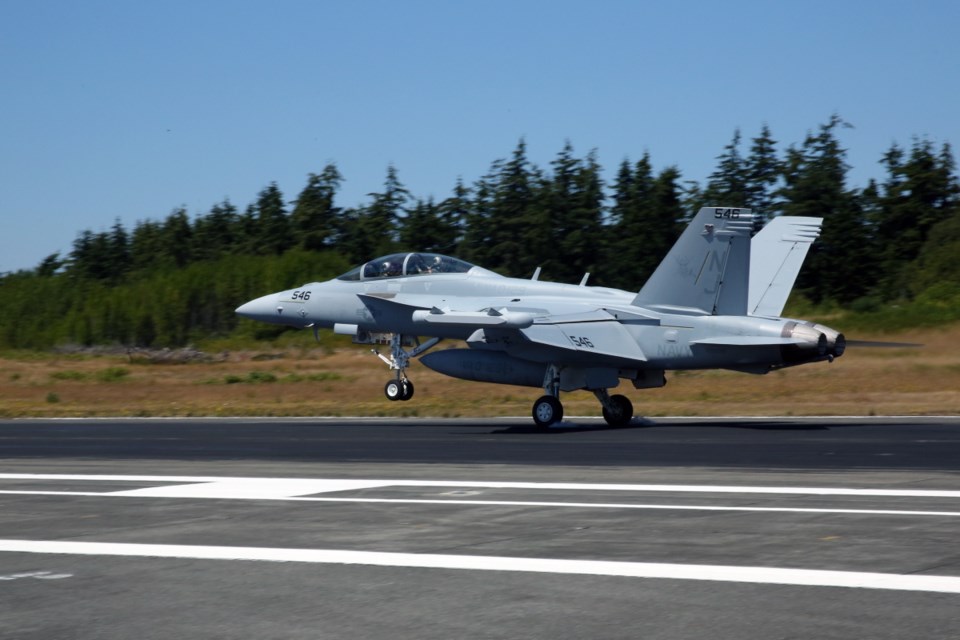The sound of U.S. navy Growler jets that upsets many people in Greater Victoria might become more pervasive because of a plan to bring more of the planes to the U.S. Naval Air Station at Whidbey Island.
Oak Bay Mayor Nils Jensen said he regularly gets complaints and queries about the planes.
One came from a citizen who works at home composing music and has found it hard to work because of the noise.
“So I sent a note through the [U.S. navy] website system to suggest, if at all possible, to reroute the flight paths of these very loud jets away from Oak Bay,” Jensen said.
Whidbey Island is about 50 kilometres east of Oak Bay.
Laurie McBride, a retired businessman living in Cordova Bay, said what irks him is the U.S. navy’s seeming disregard for its Canadian neighbours. It’s especially annoying since it is conducting public meetings in and around Washington state’s San Juan Islands but none in Canada.
“I’m upset about the arrogance of the Americans in not having the courtesy to give us an explanation,” McBride said.
“Just as a courtesy, I think they should show up.”
The U.S. Naval Air Station at Whidbey Island, at the edge of Puget Sound, is home to 82 EA-18G Growler aircraft. Plans are afoot to bring in 35 more.
With the expansion, the U.S. navy is conducting an environmental-impact assessment process, including five public meetings. All five are in Washington state.
“We can’t have a public meeting everywhere,” said Ted Brown, U.S. navy spokesman. “But everybody is welcome to comment.”
Brown said people in Greater Victoria, such as McBride, can attend any session in Washington state. He also encouraged people to comment online.
Whidbey Island is home to a number of naval aircraft units, including helicopters and the P-3 and newer P-8 anti-submarine and marine surveillance planes.
The biggest source of noise is the Growler aircraft. It’s a specialized version of the F/A-18F Super Hornet and is used on U.S. navy aircraft carriers.
At Whidbey Island, U.S. naval aviators practise on a simulated carrier airstrip. That can mean Growler aircraft are in the air, in formations of three to five, for extended periods. Aviators land, touch down, power up and take off over and over.
“It’s all to reinforce that muscle memory,” Brown said. “When they are operating in the challenging environment of a dark night, landing on a carrier in a pitching sea, they can fall back on that muscle memory.”
He said the U.S. navy and American citizens who live near naval air stations are well aware of concerns about the noise. The navy is testing at least two technologies which might reduce it.
One is the application of ceramic chevron patterns inside the aircraft engine’s exhaust nozzles. It has been shown to reduce noise.
Another promising technology is an enhanced computer system to assist pilots to land safely on carriers. It would reduce the need for practice time and, in turn, reduce fuel costs and save wear on the aircraft.
For now, the U.S. navy is continuing with the environmental impact assessment of its additional 35 aircraft, including taking public comments. Anyone wishing to have a say must reply by Jan. 25, 2017.
For more information, including the draft environmental assessment report and dates of upcoming public meetings in Washington state, go online to whidbeyeis.com.



